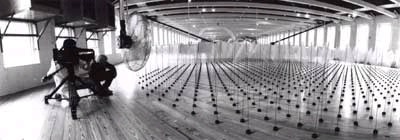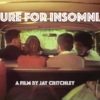
Turning North Adams Upside Down
Written by Chris Cooke | Posted by: Anonymous
Anyone who took a wrong turn in the Berkshires and ended up in the North Adams, Massachusetts, of ten years ago would have found a run-down old factory town, with 70 percent of Main Street’s storefronts empty and boarded up warehouses galore, broken windows and all. But if you’ve visited the town lately, the first thing you might see is the new Massachusetts Museum of Contemporary Art (MoCA) located in a rehabbed, grand old factory, its entrance adorned with an installation of upside-down trees suspended in midair.
Documentarist and North Adams-native Nancy Kelly was always ashamed of her hometown. Once a prospering industrial town, the blue-collar counterpart to Williamstown’s wealth, North Adams became an economic wasteland in the 1970s, when corporations across the country bought up local companies and closed factories in favor of cheaper production overseas, leaving 73,000 jobless in Massachusetts alone. North Adams was hit hardest, and Kelly’s memories of the town are far from pleasant. Yet she found herself pleasantly surprised when, a few years ago, during a trip home, she found preparation for the MoCA underway — and a newfound optimism beginning to show. Kelly began filming, and her documentary "Downside UP," shot over three years, is the result.
Just how does a town change from a wrong-side-of-the-tracks kind of place to a fledgling artistic community? It takes a few risk-taking, persistent people with the right ideas at the right time. And it takes some help from people in high places. First conceived in the late 1980s during the term of Governor Michael Dukakis, the $35 million MoCA project gained some unexpected support from the initially skeptical Republican Governor Bill Weld. 10,000 people attended the grand opening in 1999, and attendance has increased every year. Artists and dot-com companies were drawn in by the low price of vast warehouse space begging for occupants, and restaurants and inns have begun popping up all over.
Kelly interviews people involved in the project, locals and newcomers from the town, and various family members to paint a vivid portrait of North Adams before and after the museum’s arrival. We’re given a tour of many museum exhibits, including an elaborate glass laboratory of indecision, an enormous noisy installation called "Uber-organ," and of course, the upside-down trees that become the central metaphor for the film. When a dilapidated blue-collar town can become a major center for contemporary art, the locals — even those who don’t "get" the art — are empowered, and economic, cultural, and art establishments are thrown topsy-turvy. And Nancy Kelly, once too embarrassed to admit she ever lived there, shows the rise of her once not-so-great town in terms both inspirational and triumphant. "Downside UP," like North Adams, shines of success.










